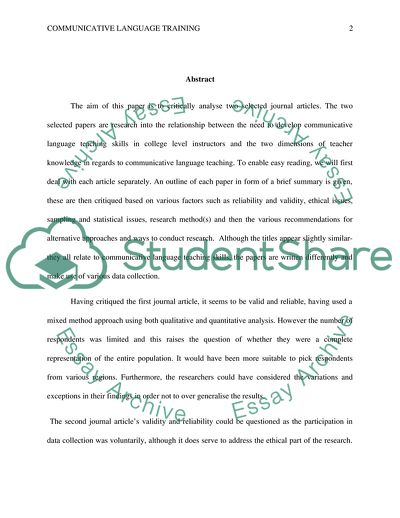Cite this document
(Comparison of Two Research Articles Assignment Example | Topics and Well Written Essays - 5000 words, n.d.)
Comparison of Two Research Articles Assignment Example | Topics and Well Written Essays - 5000 words. https://studentshare.org/journalism-communication/1818538-comparison-between-two-research-articles
Comparison of Two Research Articles Assignment Example | Topics and Well Written Essays - 5000 words. https://studentshare.org/journalism-communication/1818538-comparison-between-two-research-articles
(Comparison of Two Research Articles Assignment Example | Topics and Well Written Essays - 5000 Words)
Comparison of Two Research Articles Assignment Example | Topics and Well Written Essays - 5000 Words. https://studentshare.org/journalism-communication/1818538-comparison-between-two-research-articles.
Comparison of Two Research Articles Assignment Example | Topics and Well Written Essays - 5000 Words. https://studentshare.org/journalism-communication/1818538-comparison-between-two-research-articles.
“Comparison of Two Research Articles Assignment Example | Topics and Well Written Essays - 5000 Words”. https://studentshare.org/journalism-communication/1818538-comparison-between-two-research-articles.


